Cannabis bud rot: How to avoid, identify, and get rid of it
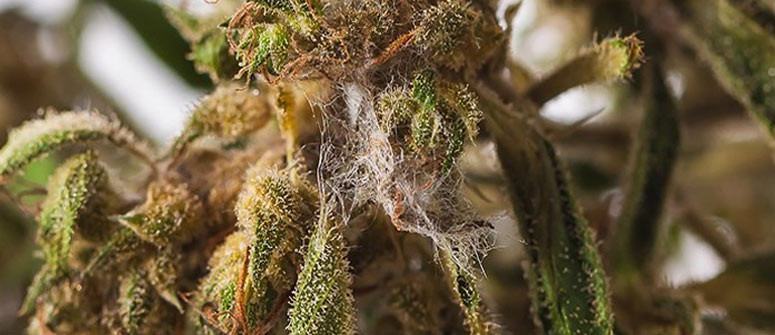
Ever heard of cannabis bud rot? If you haven't, or if you're already suffering from the plight, this article provides practical advice on preventing it from happening, as well as rectifying the situation to the best of your ability.
Contents:
So you pay a visit to your cannabis crop one day, and you notice something different. One of your plants is now discoloured and has taken on a dark brown hue from the previous bright green. Elsewhere, leaves are turning yellow, stems are turning to mush, and plants are generally looking weak.
That right there is a bad case of bud rot.
Yes, just like any plant, your beloved cannabis crops are susceptible to rotting. Mould begins to build up and eats through the buds until you have pretty much nothing left to smoke.
Now, there are several reasons bud rot occurs. Generally, it is caused by a lack of air circulation alongside high humidity and moisture levels. However, there are ways you can prevent bud rot from occurring, which we will share in this article. But first, a little background.
What Is Cannabis Bud Rot?
As mentioned, bud rot (Botrytis) occurs in environments where air circulation, moisture, and humidity levels aren’t properly regulated. Namely, not enough air is moving around, and there’s too much moisture in the air and/or environment.
It’s these specific conditions that encourage the growth of fungi. And once it takes over, it hinders the adequate movement of water and nutrients through the leaves and flowers. As a result, the plant dies off slowly but surely.
Bud rot is a bit tricky to spot at the onset. It only becomes noticeable once your plants are discoloured and covered in those dust-like particles. When that happens, you’re already too late.
What Causes Cannabis Bud Rot?
The worst thing about bud rot is that the fungus can spread from one plant to another through strong winds and rain.
Before you know it, you have a full-blown infestation that’s decimated all of your crop. As a grower, that could be the most heartbreaking thing to ever happen to you.
In this section, we’ll delve deeper into the common causes of bud rot. As you will see, it is mostly caused by Mother Nature herself. But in some cases, it is within the grower’s control to prevent such instances from occurring.
High Humidity Levels
High humidity is the biggest contributor to bud rot. If we’re putting a measurement on it, we’re talking about a relative humidity of more than 60%.
Leaving your buds moist or under humid air for several hours is pretty much predisposing them to bud rot. It’ll only be a matter of time before you see your beloved herbs die a slow death.
If you’re growing outdoors, rain and morning dew are the usual causes of bud rot. If you fail to shake off all that water immediately, you’ll likely see Botrytis develop in no time.
Plant Genetics
Just like with humans, genetics plays a role in overall plant health. In this case, certain strains may be more predisposed to bud rot.
Let’s take a look at the two primary strain types: sativa and indica. In general, sativas adapted to the climates of warmer, more humid regions of the world. Thus, they have lighter, longer, wispier buds, which makes them more resistant to mould.
Indicas, on the other hand, developed in drier climates, so once you introduce humidity into the equation, their dense buds become much more susceptible to mould growth.
As such, the type of strain you choose to grow depends largely on the climate of your location and/or the setup of your indoor grow space.
Dense Buds and Foliage
Speaking of dense buds, these are the type that are most vulnerable to Botrytis attack. That’s because plants with massive colas (a bud cluster that grows tightly together) trap moisture inside.
And because there isn’t any air exposure, all of that moisture builds up over time. Eventually, mould will start to develop and consume the entire plant.
If these are the type of buds you’re growing, it’ll be best to keep a watchful eye on them—especially if you’re growing outdoors where you have very little control over the surrounding environment.
Wrong Temperature
Just like Goldilocks and the three bears, you wouldn’t want to expose your cannabis to temperatures that are too hot or too cold. You want it to be just right, and here’s why.
Fungus thrives in cold temperatures and wet environments. Mould, on the other hand, grow faster in warmer temperatures. Especially when the relative humidity begins to rise, that’s when your problems get bigger.
In this case, you’d want your plant’s surroundings to be around 24°C (75°F) during the flowering stage. That is the perfect middle-ground, as far as the surrounding temperature is concerned.
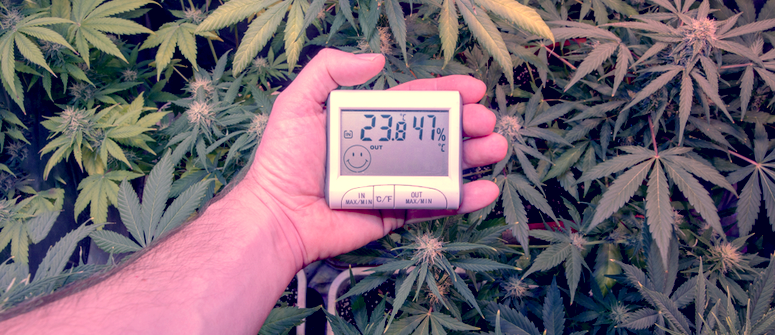
Poor Ventilation
This could be a problem for both indoor and outdoor growers, but it’s an issue that the former usually faces. Once air fails to properly circulate on top, underneath, and through the plant’s insides, bud rot becomes more prevalent.
That’s because leafy plants like cannabis hold moisture between their leaves, which causes humid air pockets to develop. And as we mentioned throughout this article, that combination of humidity and moisture stimulates mould growth.
How To Identify Bud Rot on Cannabis Plants
They say prevention is better than cure. But if bud rot attacks before your preventive measures, then you should know how to spot it before it’s too late.
What Does Bud Rot Look Like?
To spot the first signs of bud rot, you must know where to look, and what to look for. Here are the common symptoms of bud rot, which will manifest differently depending on the stage of development.
Bud Symptoms
This is one of the first signs you’ll see. Apart from discolouration around your buds, you’ll also see chunks that look crumbly and dry.
Furthermore, you’ll notice a very distinct slimy texture upon touching mouldy buds. And you’ll know that a full infestation has occurred when the infected region easily breaks off.
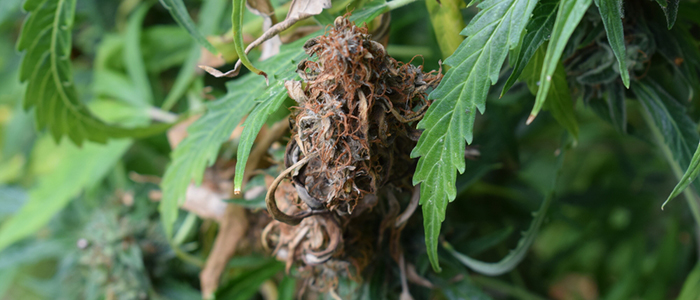
Cola Symptoms
Just like with individual buds, the colas themselves will discolour once bud rot commences. They will also appear darker, which is a clear indication of infection.
Colas that are contaminated with bud rot are very easy to spot. You won’t think twice once you see it.
Leaf Symptoms
Bud rot will also manifest through your cannabis plant’s leaves. A telltale sign is yellowing, as well as leaves becoming brittle and more likely to fall off.
In some cases, you’ll need to do a closer inspection of your leaves. Most of these moulds appear closer to the cola, and thus may be hard to notice upon first glance.
How To Treat Bud Rot on Cannabis Plants
We said it before, but the phrase “prevention is better than cure” cannot be any more true in this situation. Because, when it comes to bud rot, there is no cure. Once your precious plants are infected, you have no other recourse but to get rid of them. Sadly.
How Do You Stop Bud Rot?
You can’t stop the rotting process per se; however, you can prevent bud rot from spreading around and infesting your entire crop.
The key here is to spot the signs early on, then you can start pruning the infected buds and leaves. But be sure to disinfect your pruners right after doing so.
Simply taking out the infected plants is another effective method. An important extra step to avert further contamination is to place the rotted plants in a tightly sealed plastic bag before disposing of them.
Then there are chemicals to fight bud rot, for example copper sulfate and sulfur burners. However, these should not be viewed as a cure by any means.
Can Mouldy Buds Be Saved?
Short answer: No. Ingesting/inhaling certain fungi could lead to detrimental consequences including infections of the digestive and respiratory tracts, and even the brain. Although Botrytis itself is more likely to cause unpleasant symptoms as opposed to lethal ones, it’s by no means healthy or advised.
If you detect bud rot early on, some parts of your buds may be salvaged. But if there is a full-blown infection, don’t think twice—throw it out immediately.
How To Prevent Bud Rot in Cannabis
This article wouldn’t be complete without some preventive measures. Here are some ways you can spare your plants from bud rot, and yourself from potential heartbreak.
Preventing Bud Rot in the Cannabis Garden
When you’re growing outdoors, you’re mostly up against Mother Nature’s fierce elements. However, these tips also apply if you’re cultivating in a grow room.
Increase Air Circulation
As we’ve said a few times, one of the biggest causes of mould development is moisture. And it’s those treacherous, hidden beads of liquid within the buds that will blindside you with a fungal infestation.
To curb that potential issue, make sure your plants are getting enough air. Indoors, this means setting up a proper intake–exhaust system as well as standing fans to constantly circulate air around your grow room. It also means spacing plants out appropriately so moisture doesn’t build up in the canopy.
But if you're growing in your garden, you won’t be able to control the airflow itself. However, you can still take some precautionary measures. One method is to situate your plants away from tall structures, such as walls, that could block airflow. Here too, you’ll want to give your plants enough space between one another to allow them to breathe freely.
Keep Temperatures Warm
We mentioned that the best temperature for your cannabis plants is around 24°C or 75°F. Not too hot or cold, but more on the warmer side.
This is much easier to control and monitor when growing indoors, although you still need to keep a close eye. If you’re growing outdoors, you may want to consider moving potted plants to a shady area during heat waves, or erecting man-made shade over plants growing directly in the ground.
Keep Plants Dry
One of the drawbacks of outdoor growing is that you’ll constantly deal with dampness and morning dew. And if you begin your grow around the onset of the wet season, you may be in for more headaches.
Your best course of action is to keep a watchful eye on your plants. You will have to give them a shake now and then to get rid of that excess water buildup.
And remember, you shouldn’t be going over 50% relative humidity. A hygrometer should provide you with an accurate reading.
Prune Your Plants
Here is another effective way to prevent bud rot, whether you’re growing indoors or outdoors. Pruning is the process of eradicating unnecessary plant matter to increase airflow and potentially increase yields.
Apart from being a preventive measure, pruning can help boost overall plant health when done cautiously. Do not skimp on this process.
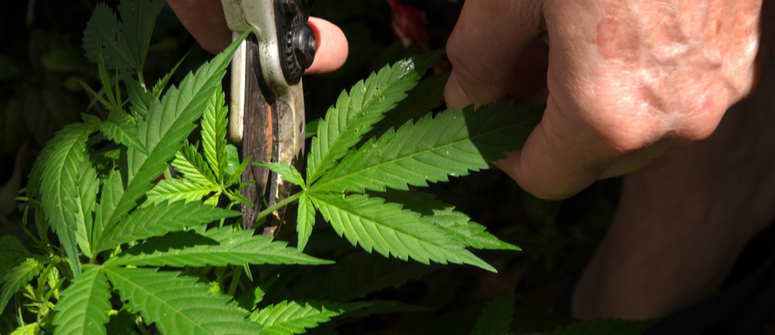
Be Attentive
Moulds and fungi may strike at a moment when you least expect it. You won’t notice their attack until it’s too late. And for that, you will need to give your plants some extra attention.
Now, this doesn’t mean you should act like a human security camera. But you will need to take special care during your plant’s late flowering stage when it's most susceptible. Issues will mostly occur on the larger, denser buds.
You'll also want to pay close attention during the humid or wet months of the year.
Preventing Bud Rot While Drying Cannabis
Moulds and fungi can still develop during the drying process. Here are some ways to prevent bud rot during this stage:
- Check your colas for any signs of rotting and immediately discard if you see some.
- Adjust the temperature and humidity levels of your drying room accordingly.
- If you’re growing during the rainy season, try to time your harvest for when there is the least precipitation. Ideally, you’d want a dry spell of a few days.
- Do some wet trimming. Trimming off the large fan leaves and smaller sugar leaves should help minimise the moisture content before you commence drying.
What Can Cannabis Bud Rot Be Mixed Up With?
Bud rot isn’t the only problem you should be looking out for. Other infections pose as much, or more, of a risk to your plants. Some of these are also trickier to spot; but regardless, here are some you should keep an eye out for.
Powdery Mildew
You can get a good clue from the name itself. That white, powdery substance on your plants likely isn’t snow. There’s a good chance you’re dealing with powdery mildew.
Powdery mildew usually preys on the leaves. Throughout the prolonged period of its attack, you’ll notice full-on rotting that can eventually stunt the growth of your plants. Apart from rotting buds, you’ll also have much smaller yields than you should be getting.
The fungal spores of powdery mildew are adaptable and resilient enough to remain in your garden beyond harvest. And if you’re not attentive enough, it may end up killing off your plants.
Fusarium
This is a fungal disease you’ll want to give extra attention to. For one, you will only notice a Fusarium attack once your plants begin to wilt. The roots and stems will also begin to rot, while the xylem (stem vessels that carry water) will start to redden.
The xylem is Fusarium’s main target, which ultimately causes the improper distribution of water throughout the plant. This, in turn, stunts its growth. But if the attack continues for longer, your crops can die off.
Getting rid of Fusarium is also a tough task. It can lay dormant in your soil for months before making its presence known during the warmer season.
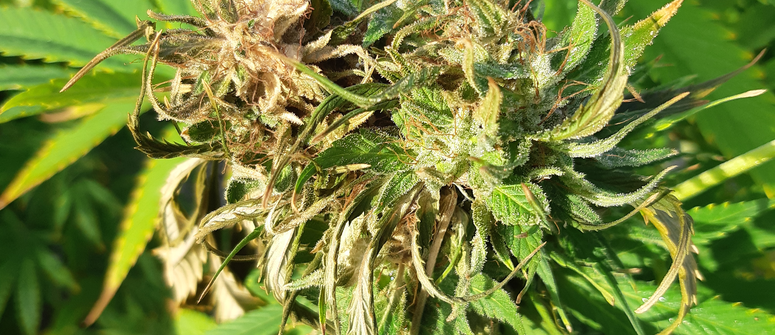
Sooty Mould
Sooty mould usually attacks after the plant’s been infected by other pests. Specifically, it begins its infestation after insects have infected the leaves and exposed the sap.
As the name suggests, sooty mould resembles the ashy substance you find in fireplaces. It starts as a dark, powdery layer that eventually thickens into a sheet-like texture over time. Sooty mould can wreak havoc on your herb regardless of the time of year, as long as there’s already been an insect attack.
While it doesn't exactly attack the plants, it causes damage by blocking out the light and ultimately hindering photosynthesis. Thus, it will still adversely affect growth, which is why you need to be vigilant.
Pythium
With over 150 species in existence, not all Pythium will harm your plants. Those that do will cause damage during the early seedling stage. These fungi lurk underneath the soil, which makes them harder to detect. They will usually attack the roots, causing your plants to wilt and slowly die off.
You know you’re dealing with Pythium if you see brown discolouration on the roots. A noticeable foul odour will also begin to emanate.
Is Bud Rot Dangerous?
Another short, straightforward answer: Yes, it is. As mentioned, ingesting harmful fungi will lead to serious, long-term health consequences. The mildest symptoms may be flu-like symptoms and potential allergic reactions, while the worst would be chest pains and respiratory issues.
Once you see signs of mould or fungus, your options are either to snip off the infected area or to throw out the plant altogether. That will depend on the severity of the contamination and the type of affliction.
But with these tips in mind, your best bet is to take precautionary measures. Keep in mind that when it comes to bud rot, prevention will always be better than cure.
.jpg)
.jpg)

.jpg)
